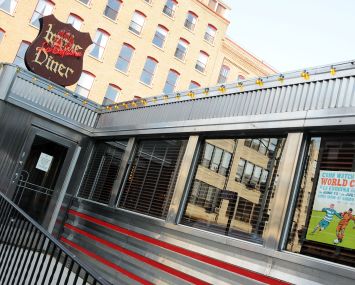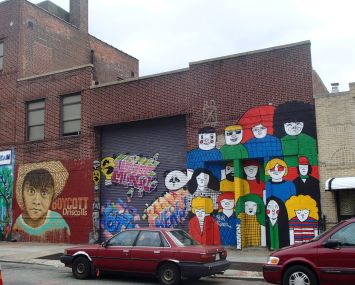 On a recent sunny Saturday morning, a group of 30- to 40-something Carroll Gardens locals stood outside Carroll Park at a table manned by local community activists, their discussion rife with words like “developers” and “preservation.” Upset that the nearby Hannah Senesh Community Day School was seeking a variance that would allow it to acquire public land, the activists were hard at work soliciting signatures for their petition against the change. Once I heard one of the concerned citizens utter the words “Superfund,” and “Gowanus Canal,” I had to ask, “Do any of you know Linda Mariano?”
On a recent sunny Saturday morning, a group of 30- to 40-something Carroll Gardens locals stood outside Carroll Park at a table manned by local community activists, their discussion rife with words like “developers” and “preservation.” Upset that the nearby Hannah Senesh Community Day School was seeking a variance that would allow it to acquire public land, the activists were hard at work soliciting signatures for their petition against the change. Once I heard one of the concerned citizens utter the words “Superfund,” and “Gowanus Canal,” I had to ask, “Do any of you know Linda Mariano?”
One activist named Maryann piped up: “Everyone knows Linda,” she told me, declining to give a last name but introducing her attentive mutt, Ringo.
“She’s one of the most amazing women in this neighborhood!” yelled Jacqueline Raque, a Carroll Gardens resident originally from California. “In an area full of amazing women, she is a shining star,” she said.
Linda Mariano is somewhat of a local hero in Carroll Gardens to bloggers, business owners, and especially those residents who feel strongly about preserving the neighborhood’s character. It is, in part, because of her efforts that the EPA has nominated the Gowanus Canal—a stinky, garbage-filled body of industrial refuse—as a potential federal Superfund site. If passed, the large-scale cleaning project would include dredging the man-made passage for all of the dangerous metals and toxins buried deep beneath its oily, lavender surface over a century of industrial use.
An October article of The New York Times Magazine about the EPA nomination cites FROGG (Friends and Residents of Greater Gowanus), a group that Ms. Mariano co-founded, as a mouthpiece for community members who supported the nomination and were adamant against the premature development of housing along what many consider to be a toxic site. Among her efforts, Ms. Mariano distributed fliers and pins with a logo depicting a whale that read “Gowanus Canal: Superfund Me!” Some of the posters can still be seen in the windows of houses in Carroll Gardens.
“We seek to improve the environment because of the level of toxins and contamination in the land,” Ms. Mariano says. “The Gowanus is what we would call an aquatic brownfield. We’ve responded to every developer who has put in applications for variance and rezoning, and not just with memos. We’ve gone to hearings and meetings and sent in written materials to various representatives—our gift from the gods is the Superfund nomination, I have to say.”
An EPA spokesperson later told Ms. Mariano that, normally, the nomination of a new Superfund site generates about 10 or 15 written responses. In the case of the Gowanus Canal, the EPA received more than 800.


